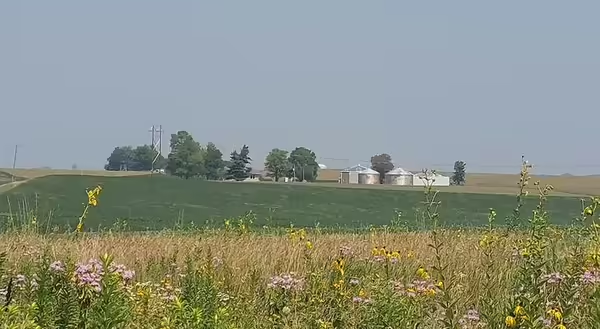
Understanding Illinois property tax calculations is complex and confusing. Properties such as personal residences are taxed based on fair market value. The State of Illinois assesses farmland based on the agricultural use value rather than the farm market value. Based on farm income generation, this system prevents wide fluctuations yearly and is intended to better serve the farm taxpayers and entities who rely on local property taxes. The farm income for calculating tax bills is based on a five-year average, which keeps the system more stable. High profits in the earlier part of this decade would have triggered higher tax rates if the tax bills were adjusted immediately. Conversely, lower farm profits will be reflected more slowly in tax bills.
Government agencies and schools in low-population counties depend more on farm property taxes than those in more urban counties. Year-to-year stability is important, and the current property tax code provides the framework for agricultural economic stability. Farm tax assessments are based on land use under average-level management, the relative productivity of soils, and the present value of the net income assigned to the land from farm production. The profitability of your soils directly impacts how much you pay in farmland property taxes.
Farm Productivity Index in Tax Calculations for Farmland
In Illinois, farmland productivity is based on Bulletin 810, which assigns index numbers relative to soil productivity. This article provides a general and straightforward explanation, and more detailed information can be found through your local county assessor's office. The Productivity Index is simply a relative number in comparison to other soils. Bulletin 810 is similar but not identical to Bulletin 811. Bulletin 811 is often used to indicate how productive a farm is for farmland sales. The PI Index numbers in Bulletin 810 are lower than those in Bulletin 811, and some confusion exists among taxpayers over the differences. Farm owners can look up the soil types on their farms at many of the local county GIS websites. The soils are listed on what is typically called the farm card or linked online under farmland. The county assessor's office can assist if a county does not have a website with the farm soil information.
Illinois law states that the property must have been used as a farm for the previous two years to qualify for a farmland assessment. The statute defines a farm as any property used solely for growing and harvesting crops or livestock/poultry farming. A farmland assessment will not be given to property used for residential purposes, even though some farm products may be grown for incidental agricultural use.
Who Determines My Farm Assessment
The assessment of farmland is the responsibility of your local county assessor. However, by law, specific responsibilities have been assigned to the State of Illinois, particularly the Illinois Department of Revenue (IDOR). For example, the IDOR must calculate soil productivity index use-value figures (rating the soils of the state along with profitability) and certify them to county officials yearly. These officials then apply the statistics to the identified soil types on individual farms or parcels of farmland to establish an assessment. Soils across the state and your farm can vary significantly. The IDOR controls the income calculations of your farm’s soil type when determining the income assigned to your farm, not your local tax assessor. Your local tax rates are based on the number of taxing entities within the jurisdiction of your farm location and the assessment charge those entities receive. The assessments are set through referendums, and the levied tax rate is determined locally.
Why Did My Farm Property Tax Go Up or Down
Higher farm profitability triggers a higher property tax on farms, while lower profitability can reduce the tax burden. As previously discussed, Illinois farm property taxes are determined on a five-year average of farm profitability. Over five years, higher income years can offset a lower farm profit year. There is also a two-year lag, which accounts for the slow adjustment of farm property taxes. 2025 property taxes will be paid on 2024 calculations, accounting for 2023 farm income. Thus, it takes seven years to fully adjust to ever-changing farm economic conditions.
Please contact the Illinois Department of Agriculture or your local County Assessor's Office for more information.